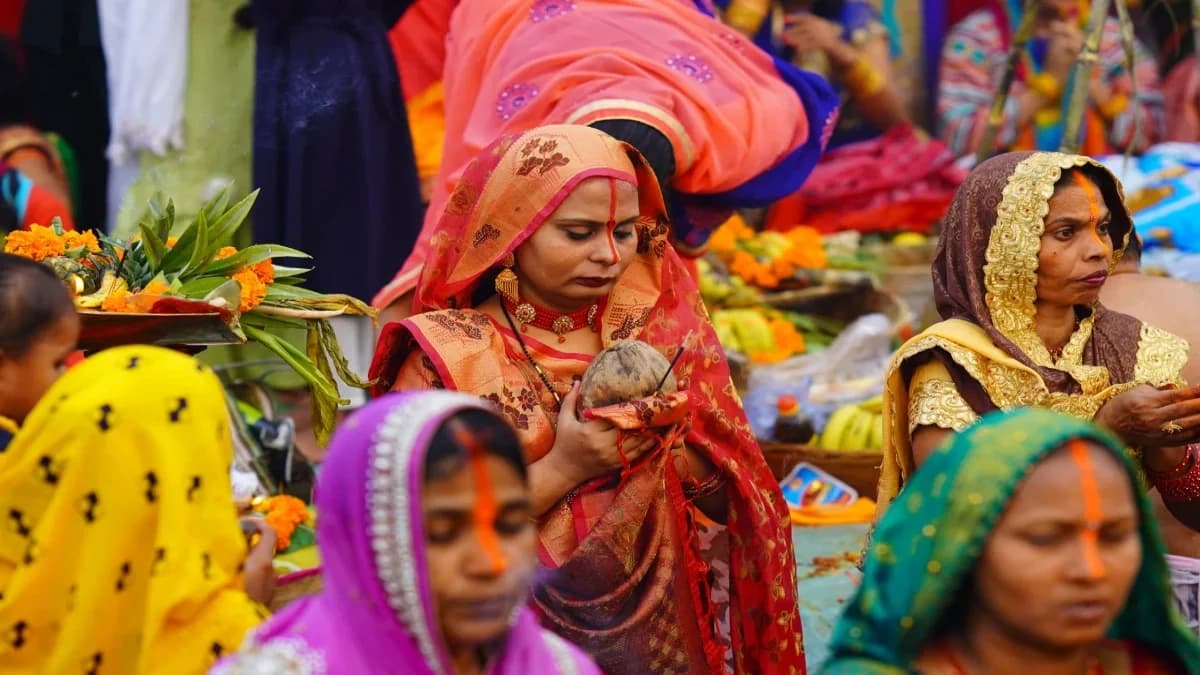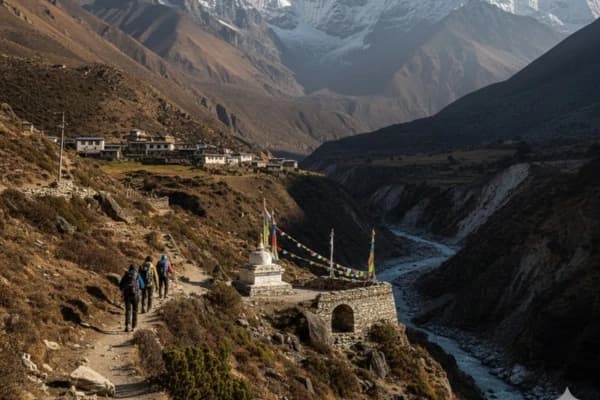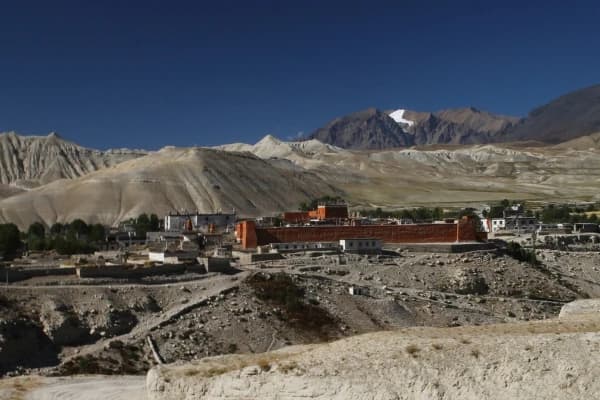A festival where devotion meets nature and community.
Chhath Festival, also called Chhath Puja, is a four-day Hindu celebration for Surya Dev (the Sun God) and Chhathi Maiya. It’s all about saying thanks, staying pure, and keeping a good bond between people, nature, and the gods. The festival happens in both Nepal and India, but it’s really important in Nepal, especially in the Terai region and by rivers all over the country.
Whether you’re a traveler wanting to experience culture or just curious about Nepal’s traditions, Chhath gives an amazing look at devotion, family time, and caring for the environment.
Experience Nepal’s Festivals Up Close - Join Our Guided Cultural Treks at Nepal Gateway Trekking.
What is Chhath Festival?
Chhath Festival is one of the most significant Hindu festivals, mainly celebrated in Nepal and Bihar, India. The word “Chhath” comes from a Sanskrit word meaning “six,” because it happens on the sixth day after Tihar (Diwali) in the lunar month of Kartik-Mangsir.
The festival honors Surya Dev, the Sun God, and Chhathi Maiya, who are believed to bless people with health, wealth, and happiness. It also focuses on being pure, simple, and eco-friendly, making it very spiritual and nature-friendly.
Did you know? Chhath is one of the few festivals where people pray to both the setting and rising sun, showing thankfulness for the whole cycle of life.
When is Chhath Festival Celebrated?
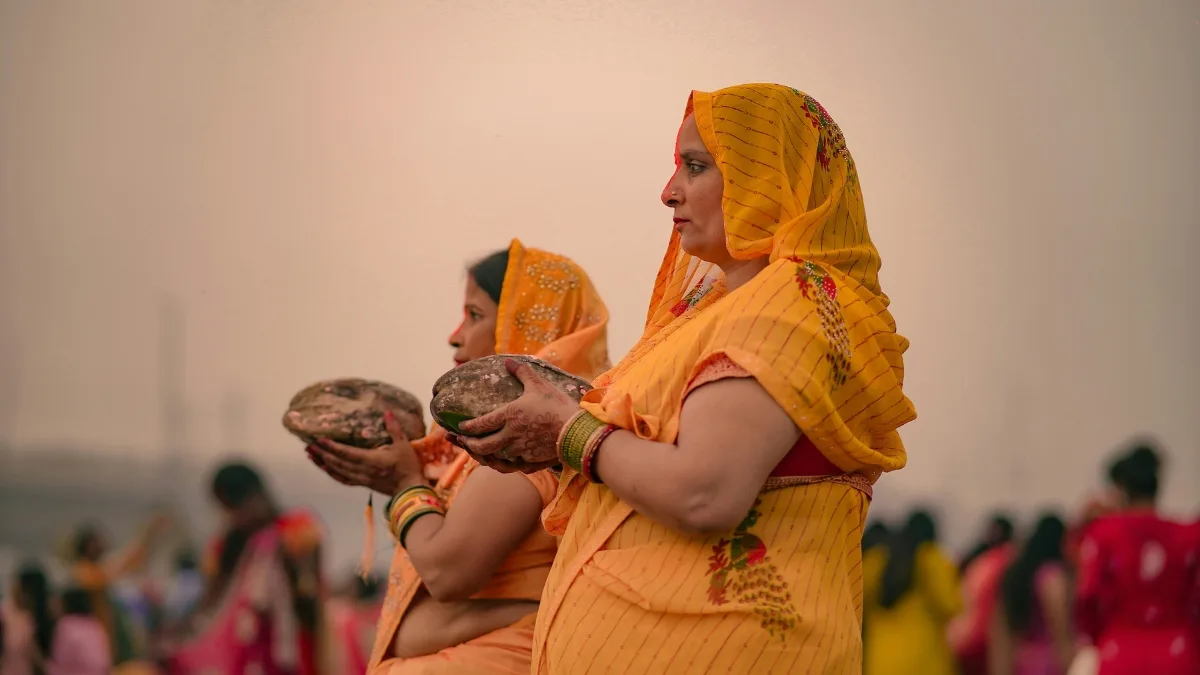
Chhath is celebrated six days after Tihar (Diwali), usually between late October and mid-November depending on the lunar calendar. The festival lasts four days, and each day has special rituals done at rivers, ponds, and ghats all over Nepal.
- 2025: Main prayers and offerings fall on 27 October.
- 2026: The festival peaks on 15 November.
Chhath Festival Dates in Nepal
|
Year |
Nahay Khay (Day 1) |
Kharna (Day 2) |
Sandhya Arghya (Day 3) |
Usha Arghya (Day 4) |
Public Holiday |
|---|---|---|---|---|---|
|
2025 |
Saturday, 25 Oct |
Sunday, 26 Oct |
Monday, 27 Oct |
Tuesday, 28 Oct |
27 Oct 2025 |
|
2026 |
Friday, 13 Nov |
Saturday, 14 Nov |
Sunday, 15 Nov |
Monday, 16 Nov |
15 Nov 2026 |
If you’re planning to go, remember that sunrise and sunset times are really important for the rituals. For example, in 2026, sunrise is around 6:44 AM and sunset is about 5:28 PM on the main day.
Travel Tip: Since Chhath comes right after Tihar, places to stay near river ghats in Janakpur, Birgunj, and Kathmandu fill up fast. Book early to get the best experience.
Plan Your Chhath Festival Visit with Expert Guides - Book your spot now with Nepal Gateway Trekking.
Importance of Chhath Puja in Nepalese Culture
Chhath is more than just a religious ritual, it’s a vibrant celebration of life, purity, and community that lights up the hearts of people across Nepal.
During this festival, you can feel the devotion everywhere, hear songs, and see colorful offerings at the riverbanks, making it a really unforgettable experience. Its importance in Nepalese culture comes from three main points.
- Spiritual Significance: During Chhath, people fast, take holy baths in rivers, and offer prayers and gifts to the sun god. In return, they ask for good health, happiness, and the well-being of their families.
- Environmental Values: Chhath promotes water cleanliness and encourages using biodegradable offerings, showing a strong respect for nature and the environment.
- Community Bonding: During these days, for the sake of praying, families, neighbors, and even strangers gather at riverbanks. This brings everyone together and creates a sense of unity and shared celebration unlike others.
Historical Background & Legends Of Chhath
The Chhath festival has a long history that goes back to Vedic times. It is full of fascinating stories and legends. People have celebrated it for thousands of years, passing it down through generations. Thus making it a unique mix of spiritual devotion and cultural traditions..
Chhath is especially important in Nepal’s Terai region, where rivers and ponds play a key role in daily life. Over time, it has also come to symbolize gratitude and family bonding.
- Ramayana Connection: It’s believed that Sita, after returning to Ayodhya, performed Chhath rituals to thank Surya Dev for helping her through her hardships. This shows how the festival has been linked to devotion, gratitude, and faith since ancient times.
- Mahabharata Legend: Karna, the son of Surya Dev, is said to have observed Chhath to gain divine blessings. This story shows the long-standing unwavering faith in seeking divine support in life.
Chhath Rituals - Day by Day
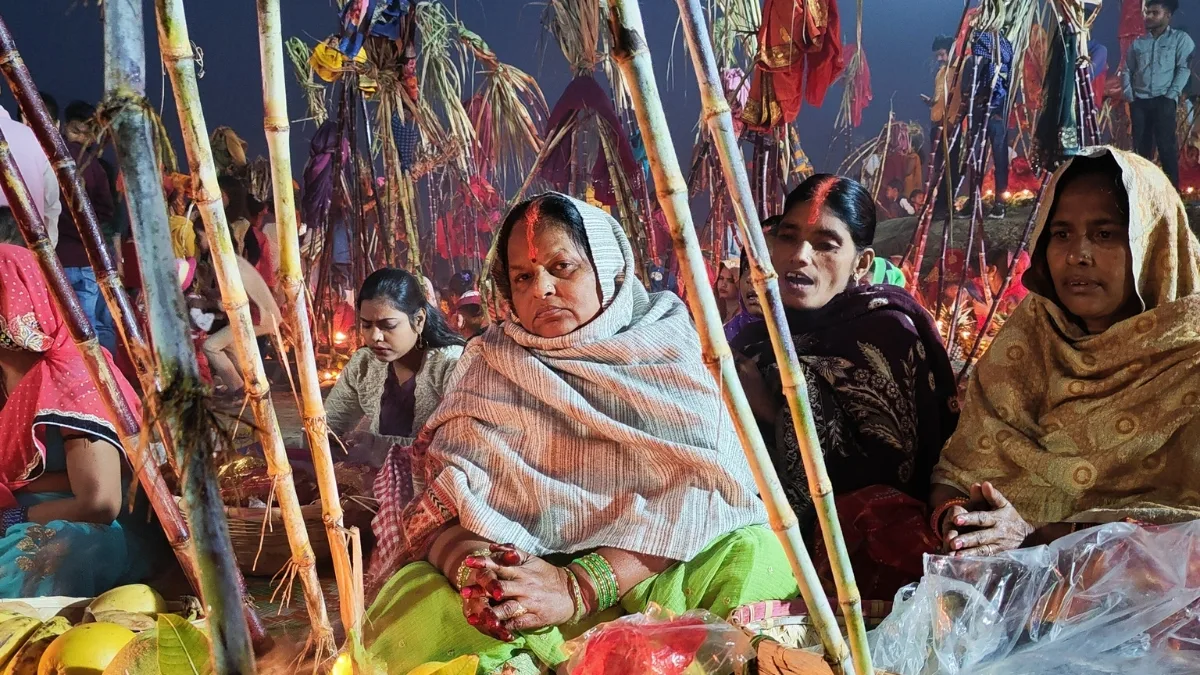
Chhath goes on for four days, and each day has its own special ritual. All of them are important for showing devotion, spending time with family, and respecting nature.
Nahay Khay (Day 1)
On the first day, people take a holy bath in rivers, ponds, or other clean water spots. This is meant to clean both the body and the mind. After the bath, they make a satvik meal, which is fully vegetarian and cooked without onion, garlic, or any artificial stuff.
The meal usually has rice, lentils, and seasonal vegetables, and it helps get the body ready for the fasting days ahead.
Kharna / Lohanda (Day 2)
The second day is all about fasting and self-control. People don’t eat anything from sunrise to sunset and only drink water. After the sun goes down, they eat kheer (sweet rice pudding), roti, and fruits, but they first give it as an offering to Surya Dev.
This day helps people become more patient and devoted, and families come together to get the offerings ready, usually following old recipes that have been passed down for generations.
Sandhya Arghya (Day 3)
The third day is the main day of Chhath. Families go to riverbanks or ghats to offer evening prayers (arghya) to the setting sun. People stand waist-deep in water, holding baskets full of fruits, flowers, and other offerings. Diyas (small oil lamps) are lit, and people sing traditional Chhath songs (Chhath geet) to honor Surya Dev and Chhathi Maiya.
Usha Arghya (Day 4)
On the final day, people return to the water at sunrise to pray to the rising sun. This marks the end of the festival and is a way to show thanks for life and blessings from the gods. Families celebrate together, and everyone finally breaks their fast after the rituals.
Traditional Food & Offerings in Chhath
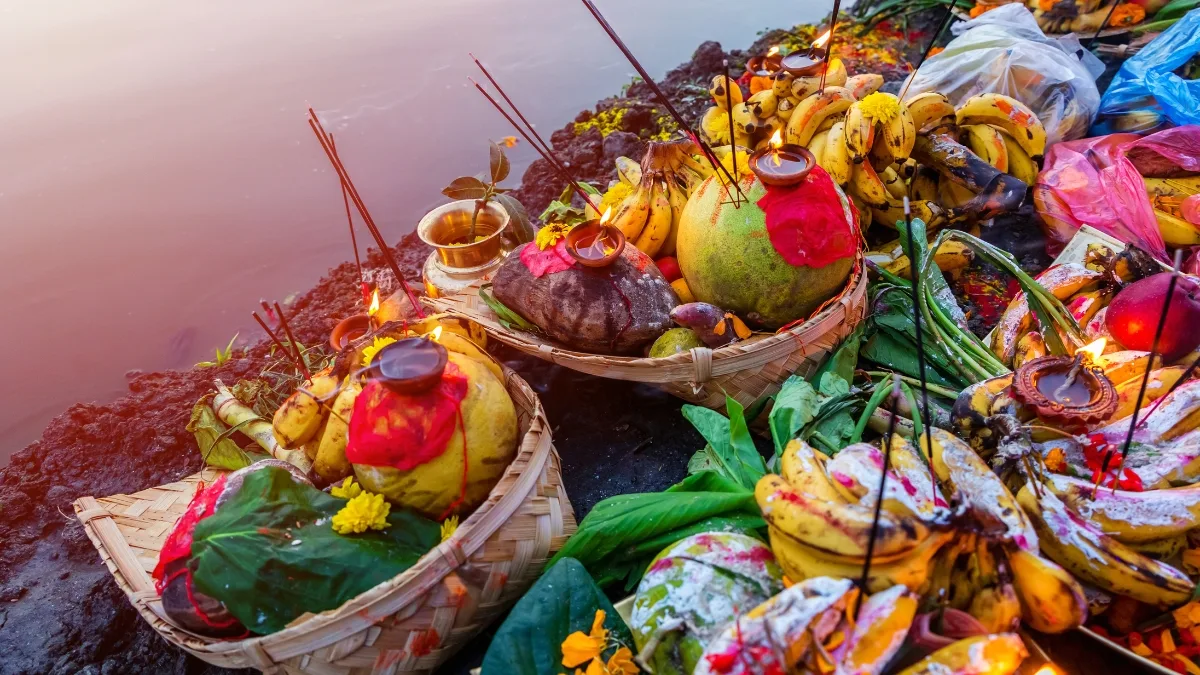
Food is an important part of Chhath, showing purity, devotion, and respect for Surya Dev. Families prepare each item carefully, following old recipes passed down for generations. Every offering has a special meaning, bringing health, luck, and prosperity to the family.
- Thekua is a sweet made from wheat flour, sugar, and ghee.
- Kheer and Roti are sacred dishes offered during Kharna.
- Fruits and sugarcane symbolize fertility and prosperity.
- Kasar and coconut represent purity and are used in rituals.
Chhath Festival Tourism in Nepal
Chhath in Nepal is a spectacular cultural festival that draws travelers to witness stunning rituals and vibrant traditions. From riverbank ceremonies to lively folk songs, the festival is an unforgettable experience:
- Devotees perform ritual bathing in rivers like the Bagmati, Kamala, and Ganga Sagar.
- Ghats are decorated with flowers, diyas, and sugarcane for offerings and prayers.
- Traditional Chhath Geet and folk songs tell cultural stories through music.
- The festival promotes eco-friendly practices with biodegradable offerings and ghats clean-up drives.
How is Chhath Celebrated in Nepal?
Chhath is celebrated with devotion, family gatherings, and special rituals across Nepal. People follow traditions that honor the sun and nature, while also enjoying songs and cultural activities. With each region adding its own uniqueness to the celebrations.
- Ritual Bathing: People take a dip in rivers like the Bagmati, Kamala, and Ganga Sagar in Janakpur.
- Offerings & Prayers: The riverbanks are decorated with diyas, flowers, and sugarcane arches.
- Folk Songs & Chhath Geet: Traditional songs tell stories of devotion and mythology.
- Eco-Friendly Practices: Many groups now use biodegradable offerings and organize clean-up drives before and after the rituals.
Best Places to Experience Chhath Festival in Nepal
Chhath is celebrated all over Nepal, but some places are extra famous for their big rituals and cultural energy. From the holy ghats in Janakpur to the lively towns in Terai and the riverbanks in Kathmandu, these spots give a special way to experience the festival.
These spots showcase traditional prayers, folk songs, and community gatherings that make Chhath truly special.
|
Place |
Highlights |
Key Rituals |
|---|---|---|
|
Janakpur |
It’s a religious heartland in Janakpur. |
Grand ghats, folk songs, evening arghya |
|
Birgunj |
Largest celebration in Birgunj. |
Huge processions, cultural programs |
|
Kathmandu |
Bagmati River ghats are the most popular at the time. |
Urban Chhath puja with eco-initiatives |
|
Lahan & Rajbiraj |
Authentic Terai vibes |
Traditional rituals, community feasts |
Pro Tip: To experience Chhath fully, try to arrive a day before Kharna so you can see the preparations and join the community gatherings.
Discover the Best Places to Witness Chhath - Explore Our Tailored Itineraries.
Travel Guide for Tourists To Enjoy Chhath Festival
- Best Time to Visit: Six days after Tihar, usually in late October or mid-November.
- Respectful Participation: Wear modest clothes, don’t disturb the rituals, and ask before taking photos.
- Safety & Crowds: Stay on marked paths at the ghats, as evenings can get very crowded.
- Immersive Experience: Join locals in folk songs and community kitchens to feel the true spirit of Chhath.
Chhath Festival Travel Guide Nepal
Chhath is one of Nepal’s most vibrant and unique festivals, offering travelers a chance to witness centuries-old rituals and join in local celebrations. Here’s a quick guide to help you make the most of your Chhath experience.
- Best Time to Visit: Six days after Tihar, from late October to mid-November.
- Respectful Participation: Wear modest clothes and always ask before photographing rituals.
- Safety & Crowds: Stick to marked ghats as evenings can get very crowded.
- Immersive Experience: Join locals in folk songs and communal kitchens for a true cultural feel.
Modern & Eco-Friendly Chhath Festival
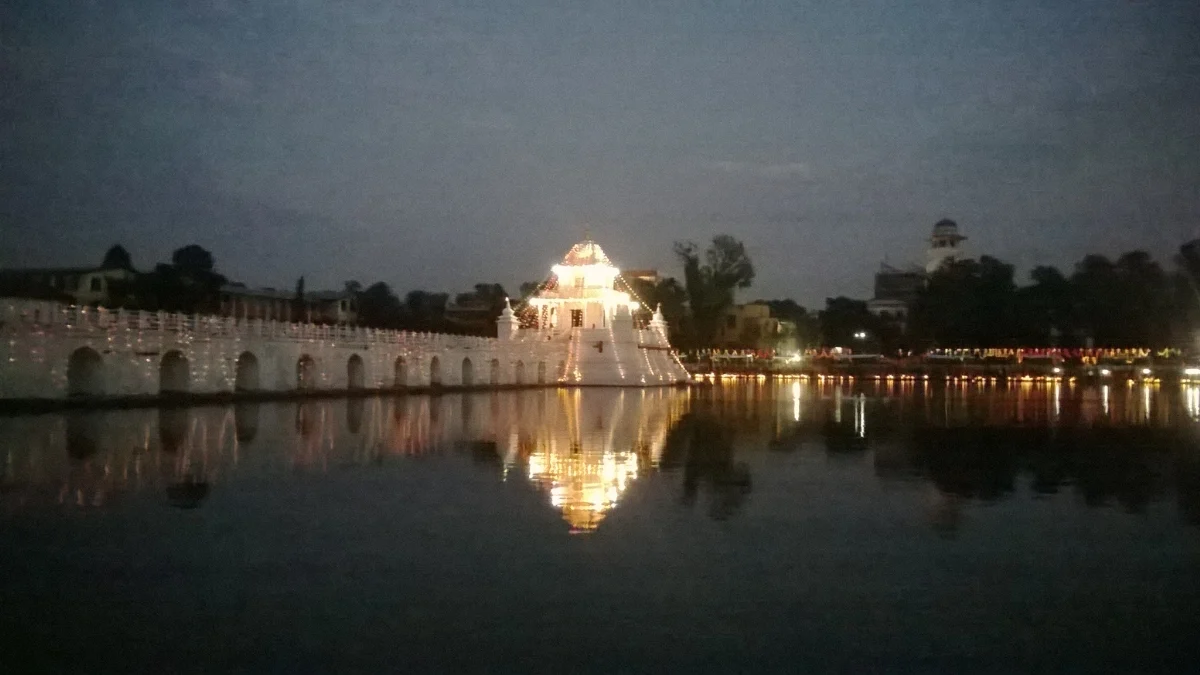
Chhath has gradually become more eco-friendly and sustainable while still keeping its traditional feel. Communities and authorities have taken major steps toward protecting rivers and reducing pollution during the festival.
- Biodegradable Offerings: People now use natural items like leaves and clay instead of plastic.
- Clean Riverbanks: Government and local groups organize efforts to keep ghats and rivers clean.
- Solar Lighting: Major ghats use solar lamps and LED lights to save energy during the rituals.
Join Nepal Gateway Trekking’s Kathmandu Valley Day Tour to explore festivals of Nepal inside valley.
Chhath vs Tihar - Key Differences
Chhath and Tihar are two important festivals in Nepal, each with its own special traditions and rituals. Both festivals differ in their deities, duration, rituals, and the foods that are prepared and offered.
|
Aspect |
Chhath |
Tihar |
|---|---|---|
|
Deity |
Surya Dev & Chhathi Maiya |
Goddess Laxmi, Yama |
|
Duration |
4 days |
5 days |
|
Rituals |
Fasting, sun worship, and river offerings |
Lighting oil lamps, worship of animals, Laxmi Puja |
| Food |
Thekua, kheer, fruits |
Sel roti, sweets, feasts |
Why You Should Experience Chhath in Nepal?
Chhath gives a unique opportunity to experience Nepal’s rich culture and spiritual traditions up close. The festival allows travelers to join in cultural activities, spiritual rituals, and witness a celebration that is becoming popular among visitors.
- Witness thousands of people gathered at rivers and ghats to experience full cultural immersion.
- Take part in prayers and rituals that mix nature and devotion for a spiritual experience.
- Chhath is a major attraction for travelers looking for festival experiences.
Final Thoughts
Chhath festival combines devotion, culture, and community, making it one of Nepal’s most unique celebrations. The festival is celebrated for four days which includes fasting, sun worship, river offerings, folk songs, and family gatherings. In these four days you can reflect on the deep spiritual and cultural roots of the country.
Experiencing Chhath while trekking in Nepal is a unique way to connect with the culture and spirituality of the region. Book your trip with Nepal Gateway Trekking to take part in the rituals, river gatherings, and local traditions for a once-in-a-lifetime adventure.
Experience Nepal Like a Local. Request a Custom Chhath Trek Itinerary from Nepal Gateway Trekking. Plan your trip today!
FAQs
Why is Chhath festival important in Nepal?
Chhath is a festival that honors the Sun God and Chhathi Maiya, celebrating purity, gratitude, and respect for nature. It also brings families closer and helps keep Nepal’s cultural and spiritual traditions alive.
How many days is Chhath celebrated?
Chhath is celebrated over four days, starting with Nahay Khay and ending with Usha Arghya. Each day has specific rituals like fasting, offering prayers to the Sun, and preparing traditional foods, making the festival deeply spiritual and community-focused.
Where is Chhath celebrated most in Nepal?
Chhath is mainly celebrated in the Terai region, especially in cities like Janakpur, Birgunj, Lahan, Rajbiraj, and Saptari. These places are known for their grand riverbank rituals, energetic folk songs, and vibrant community gatherings.
Can foreigners/tourists participate in Chhath?
Foreigners are welcome to be part of the Chhath festival. You can watch the rituals, join in community events, and soak up the culture and spiritual traditions, just make sure to follow local customs.
What foods are prepared during Chhath festival?
During Chhath, devotees prepare offerings like Thekua, kheer, roti, fruits, sugarcane, and coconut. These foods are made with care and first offered to the Sun God before being shared among family and community members.
Is Chhath festival eco-friendly?
Yes, Chhath is becoming more eco-friendly with the use of biodegradable offerings, solar lighting at ghats, and clean-up drives organized by communities and authorities to keep rivers and surroundings clean.
When is the best time to visit Nepal for Chhath festival?
The best time to visit is around 27 October 2025, and it’s ideal to arrive a day before Kharna to witness preparations and fully experience the festival.
